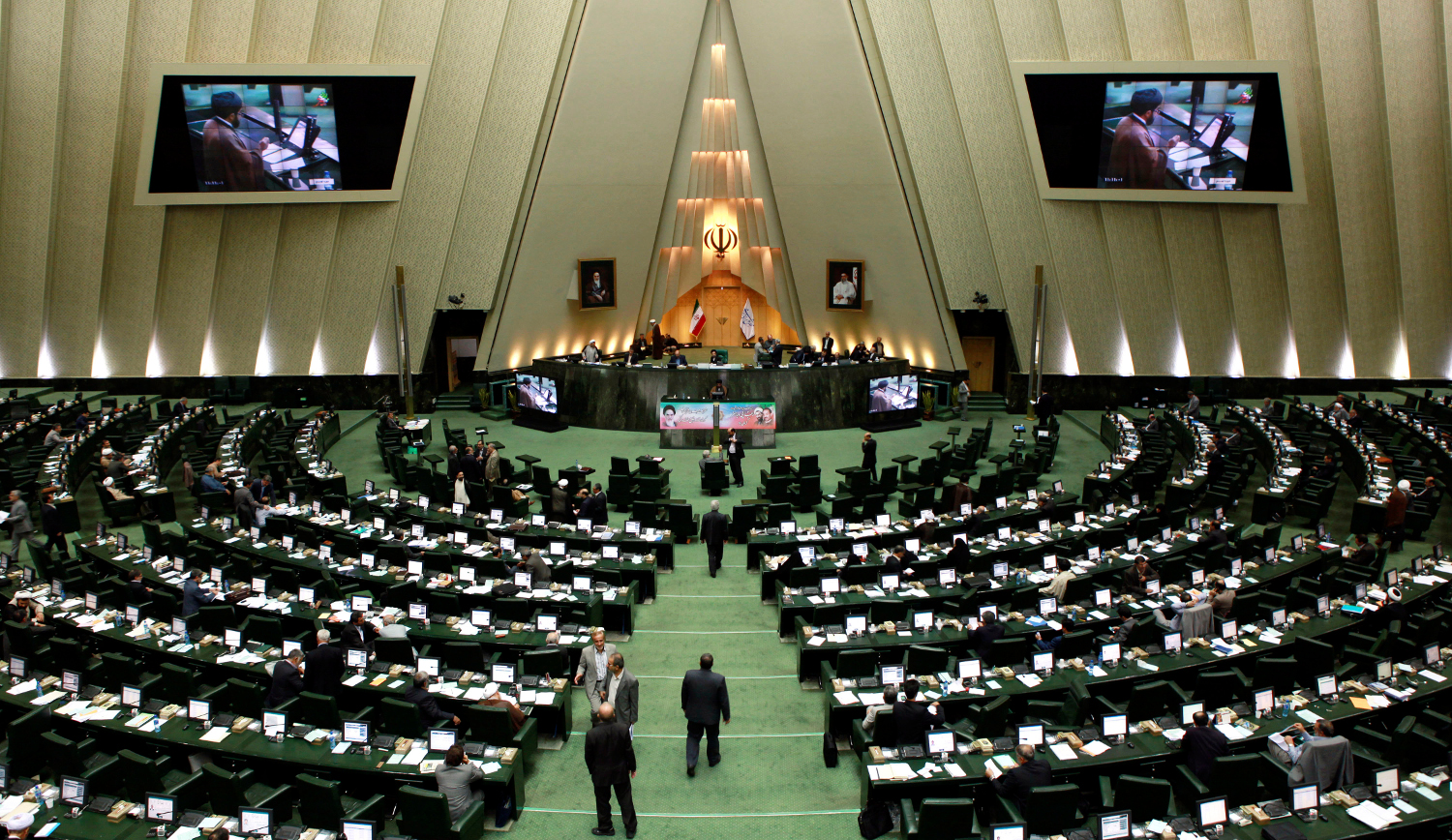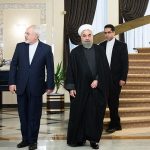by Small Media
On February 26, citizens in the Islamic Republic of Iran will have the opportunity to cast a vote for the first time since the 2013 presidential elections that swept Hassan Rouhani into office.
Since then, the Rouhani administration has been locked in a seemingly never-ending battle with the most hardline elements of the political establishment over issues ranging from foreign policy, through to cultural censorship and information controls.
Some of the noisiest criticisms of the Rouhani administration in the last few years have come from Iran’s Parliament. The last parliamentary elections in 2012 were notable for a large-scale reformist boycott, with memories of the chaotic 2009 presidential election still fresh in voters’ minds. As a result, conservative candidates cruised to victory, and still enjoy a commanding lead in Parliament today.
Will reformist and moderate voters turn out in higher numbers this year to deliver a less hostile Parliament? Or will a rigged political system and continuing voter apathy deliver another conservative majority?
Over the next couple of months we’ll be working with the Berkman Center for Internet & Society to investigate Iranian citizens’ political engagement on Twitter, reporting on the key issues dominating the campaign, and describing the kinds of political activities taking place on social media.
In this first edition of #IranVotes2016 we’ll provide a quick overview of the roles and responsibilities of the Iranian Parliament. How much power does it really wield in Iran’s political system? And how free and fair are these elections in reality? Let’s take a look.
Mostly Hot Air: Parliamentary Powers
Iran’s Parliament is made up of 290 representatives, drawn from 207 electoral districts from around the country. These MPs have the power to draft legislation and pass laws—so long as they do not contradict the Iranian Constitution.
So, who decides whether a law is constitutional or not? That’d be the Guardian Council. The Guardian Council is made up of 12 members—six clerics appointed by the Supreme Leader, and six jurists nominated by the head of Iran’s judiciary (who is himself appointed by the Supreme Leader).
The presence of the Guardian Council in the legislative process means that Parliament’s ability to change things is limited. Ultimately, all parliamentary legislation has to be acceptable to the Guardian Council—and to the Supreme Leader.
This has led to major showdowns in the past: former President Khatami’s parliamentary majority was vetoed by the Guardian Council in 2002 when it tried to pass a bill that cut the Guardian Council’s powers.
So if it can’t legislate independently, what power does Parliament have?
Well, it can be quite an effective oversight body for the executive branch of government. It’s able to launch investigations into government ministries, must confirm ministerial appointments, and can impeach the President or his ministers if it thinks they’re doing a lousy job.
It’s not shy about using this power, either: Rouhani’s first choices for the Ministry of Education, the Ministry of Science, and the Ministry of Youth Affairs were all denied confirmation, and his Science Minister Reza Faraji-Dana was impeached in 2014 for allowing Green Movement activists back into universities.
If you’re still fuzzy on the details, this video from our friends at Majlis Monitor provides a nice rundown of Parliament’s role and responsibilities.
Vetting Candidates
Back in 2012, Iranian state TV characterized the parliamentary vote as “awash with democratic energy”. Given the near-anaemic levels of participation, and the lack of so much as a handful of reformist candidates in the elections, we’d call that characterization dubious at best.
Now we’ve established what the Iranian Parliament does, it’s time to ask how democratic the system really is. State authorities like to hold Iran up as a model of democracy in the region, but in reality elections are little more than selections by the clerical elite.
In order to pass through the punishing vetting process and stand for election, Iranian citizens must comply with a huge set of restrictive criteria, including holding a masters’ degree, adhering to Islam, showing loyalty to the Constitution and the Supreme Leader, and having a spotless political (and mostly spotless criminal) record.
Our friends at Majlis Monitor have done a great job of summarizing the barriers facing hopeful candidates. Check out their infographics at the links below if you want more info on:
- How to qualify as a candidate for Iran’s Parliament
- What can get you barred from standing in the elections
If candidates don’t meet these tough requirements, then the Guardian Council bars them from standing. In 2012, out of the 5,395 candidates who applied to stand for election, just 3,444 were granted permission to do so—meaning that around 34% were disqualified.
How do the 2016 elections compare so far? Let’s take a look at the numbers we have so far.
Making the Cut: The Vetting Process in 2016
Earlier this week, Fars News Agency (very briefly) released vetting statistics (see the cached data here) showing a massive purge of parliamentary candidates, far exceeding even the purges of 2012. The biggest victims of these purges were reformist-aligned candidates—reports suggest that only 1% of moderate and reformist candidates made it through the vetting process.
We grabbed the vetting stats from Fars News before they were taken down—we’ve taken the data and visualized some of our initial findings in the data visualizations below.
Mouse over the interactive charts below to explore the data in full.
Choice-Free Elections: Over 8,000 candidates rejected
Data from smallmedia.silk.co
In the publicly-released data, 8,244 candidates were either ‘rejected’, or ‘did not meet the criteria’—a distinction that remains opaque and poorly defined. This total is far higher than in 2012, when just 1951 candidates failed to make the grade. (This year, 1872 applicants were either rejected or withdrew in Tehran Province alone!).
Rejection Stings: Under 40% of candidates approved
Data from smallmedia.silk.co
The vetting process saw just 39% of applicants qualify as parliamentary candidates—that’s almost a reversal of the 2012 elections, where 34% of applicants were disqualified. Notably, the lowest rates of approval came in urban-dominated provinces such as Tehran and Alborz, and ethnic minority majority regions such as Kurdistan, Kermanshah, and Sistan and Baluchestan.
Stay At Home: Women disproportionately barred
Data from smallmedia.silk.co
In the vast majority of provinces, women were rejected at a higher rate than men. The authorities vetted away men at a higher rate than women in just five provinces: Azerbaijan East, Sistan & Baluchestan, Golestan, Qom, and Khorasan North.
Predictions for the 2016 Elections
As evidenced by all the available data, these upcoming elections have been very tightly managed by Iran’s conservative establishment, with the Guardian Council weeding out more than half of the country’s hopeful parliamentary candidates during the vetting process.
It’s likely that the incoming Parliament will once again be dominated by conservative voices. But what will characterize voters’ conversations taking place in the run-up to February 26? Will widespread anger at the vetting process drive up apathy? Or will people make the best of a bad situation and vote for a ‘least worst’ Parliament?
In collaboration with the Berkman Center for Internet & Society we’ll be taking to Twitter over the next month to monitor election-related chatter, to gauge enthusiasm about the contest, and to identify the hot topics dominating the campaign.
Reprinted, with permission, from #Iran Votes, a project of Small Media.





